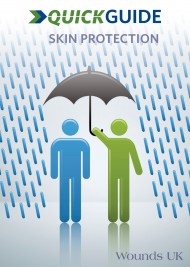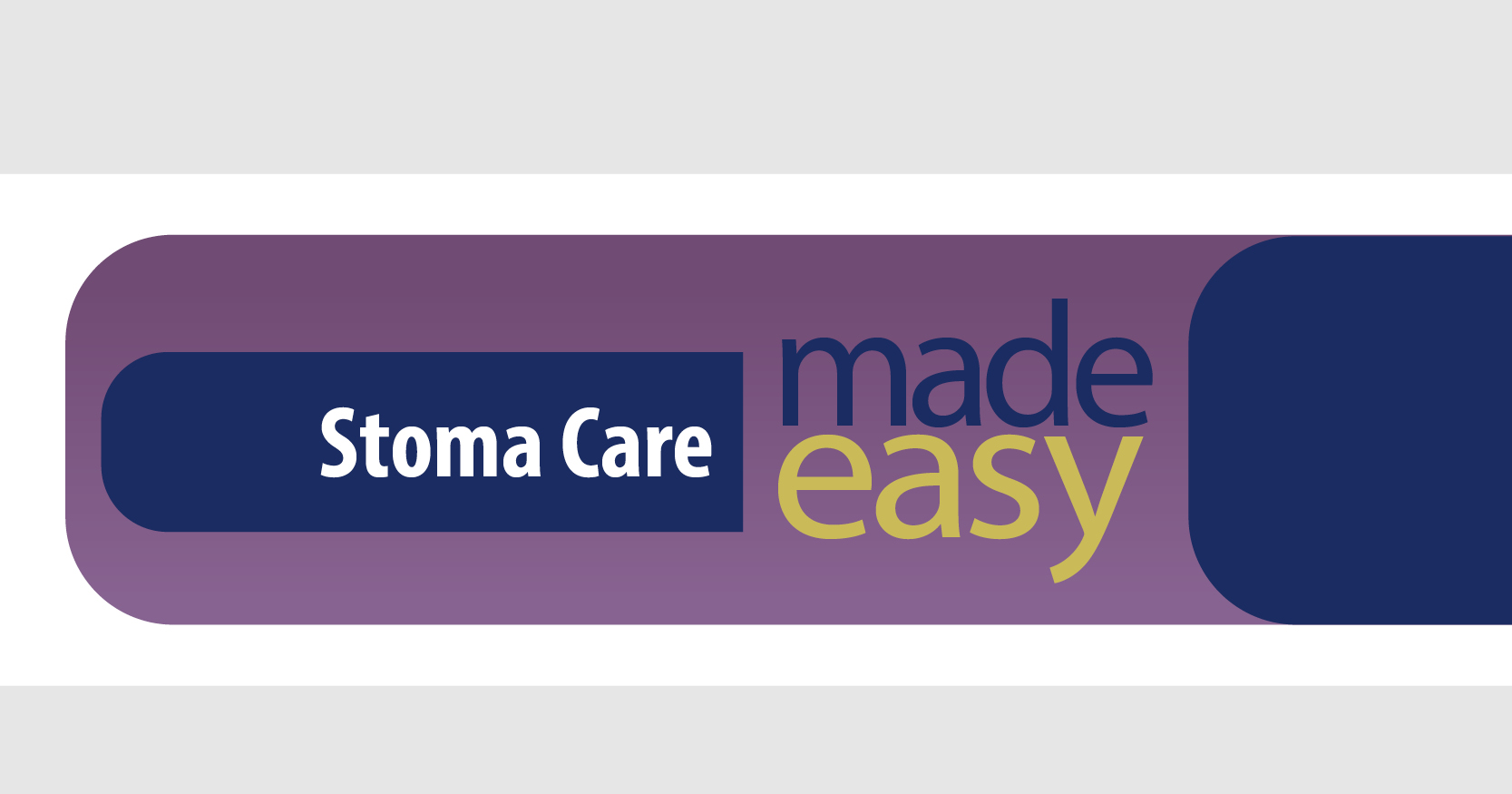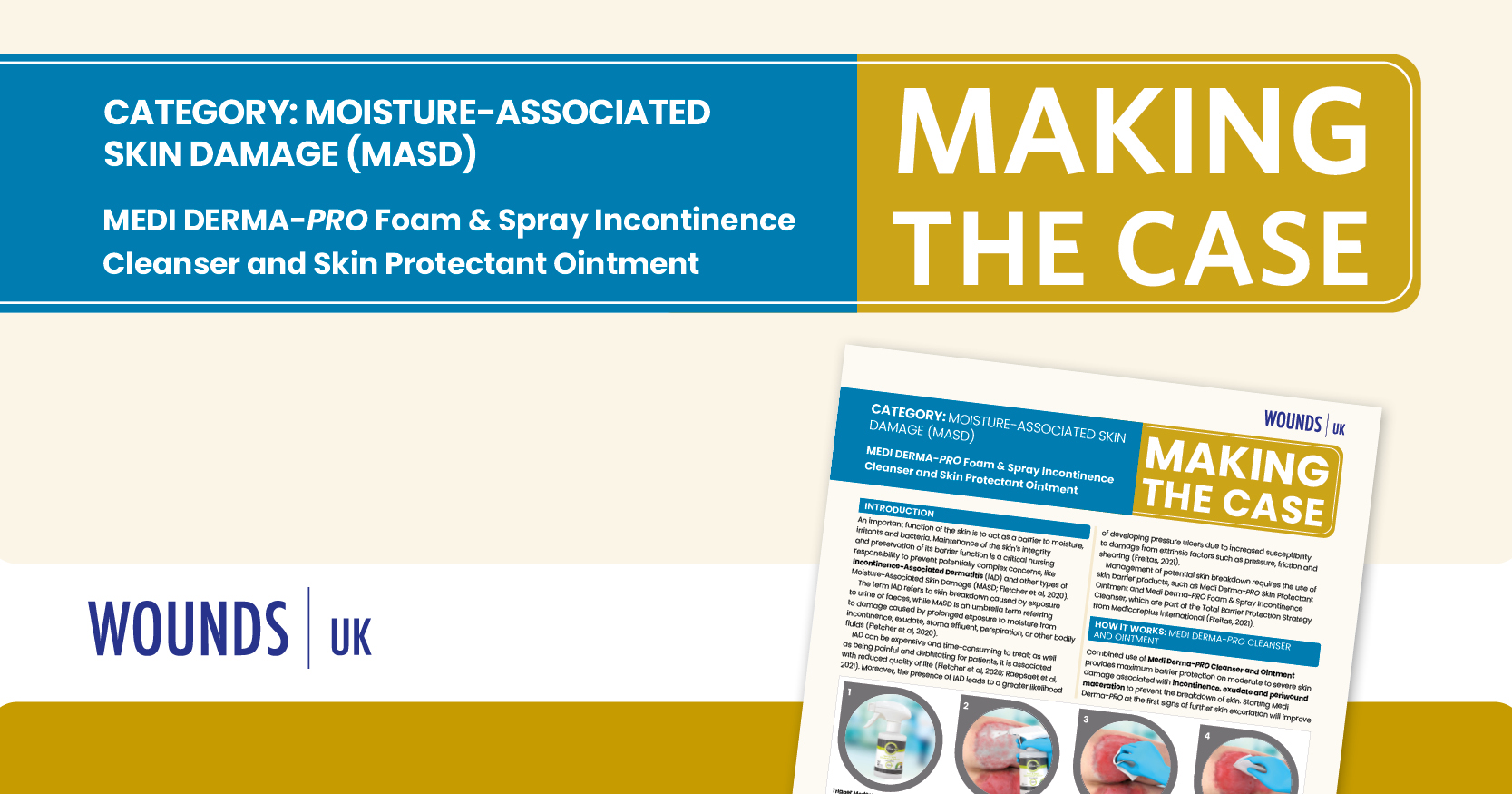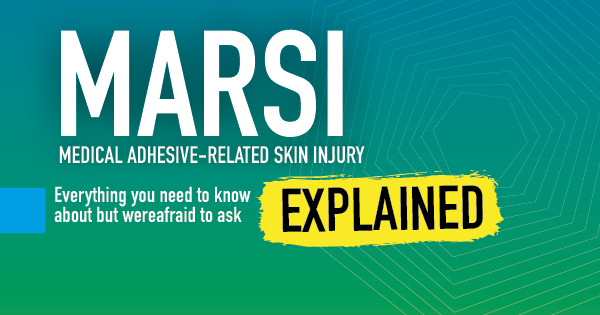The skin can come into contact with fluids such as sweat, exudate, and urine and/or faeces. If fluid contact occurs for any sustained period, the epidermis’s outer-layer cells absorb fluid and swell, making skin weaker and less elastic, and more susceptible to damage from friction and shearing forces.
The combination of these processes increases the risk of moisture lesions, moisture-related skin fold damage and pressure ulcers.
Clinicians can use this Quick Guide, to help them assess the kinds of moisture lesions and the appropriate products to provide ideal skin protection for each type.
Supported by Medi Derma-S, a trademark of Medicareplus International







